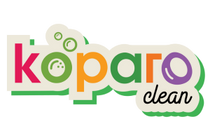
Why washing fruits and veggies with water is not enough
How to Clean your Fruits and Vegetables
Your everyday fruits and vegetables that help you eat clean and are, perhaps, an integral part of your new year new me diet, are ridden with nasty insecticides and pesticides that remain on their surface long after they’ve served their purpose.

Tomatoes, grapes, apples, spinach are just some of the food items that are consumed by Indians, extensively. These are also just some of the items that have been found to have a very high dose of pesticide residue. This is where the effect of a phenomenon known as biomagnification comes into play. Simple to grasp but terrifying to know.
What is Biomagnification?
Biomagnification is the process through which pollutants such as toxins and pesticides in our environment get passed on to organic life forms and moves up the food chain in higher concentration. The pollutants consumed by, say, organism A directly from the environment won’t necessarily kill it outright but get passed on to organism B that consumes organism A. So, the toxins move up in the trophic level and ultimately gets accumulated in the body of the organism that resides right at the top of the food chain.
In the case of humans, we are the ones residing at the top of our food chains, which means the toxins get collected in our tissues. This is how pesticides that are nonbiodegradable can end up in our system. When these toxins collect over time they make us susceptible to many acute or chronic diseases. So, it is extremely crucial that we clean our products well before we consume them.
Is soaking your groceries in water enough?
Now it’s a spectacular habit to soak or wash your produce before you eat, because washing does remove a considerable amount of toxins from your fruits and veggies, especially when done with cold water. However, with such complex & concentrated chemical pesticides being used in large-scale agriculture today, is cleaning with just plain water a safe bet? Probably not.
Cleaning your groceries with Kitchen ingredients
- You can soak your produce in Himalayan salt or common salt and water solution for 20 minutes
- Alternatively, add 1 teaspoon of baking soda to 2 cups of water and soak for 15 minutes.
- The Vinegar Method - 1 part vinegar and 4 part water solution and soaking for 20 minutes. However, vinegar isn’t advisable for fruits or veggies having very porous skins as it can affect its flavour drastically
- Scrub fruits and vegetables with thick skin thoroughly
- Cut off any damaged on discoloured areas
- Your green leafy vegetables deserve extra attention. You will have to first remove all the wilted and dry leaves then ensure individual leaves are exposed to the washing solution. Those pesky chemicals hide in dark corners of your broccoli.

Using a natural Fruits and Vegetable Wash
In order to be 100% secure to rid your produce of toxins, you can even depend on your friendly neighbourhood, non toxic, eco friendly and organic Fruit and Veggie Wash. Veggie washes usually do the job of all the above in one solution. It’s more efficient to have and you don’t have to resort to different washing ingredients for different fruits and vegetables. It promises safety all the while ensuring it isn’t adding more substances to your food.
How to clean with Koparo’s Fruit and Veggie Wash
- You’ll need a colander (a sieve with larger holes), a bowl, Koparo’s Natural Fruit & Veggie Wash and water. The bowl should be in accordance to the produce you’re cleaning, it should be able to hold enough water to submerge the produce entirely.
- Fill a bowl with water and add 2 capfuls of Fruit and Veggie Wash solution. Soak produce for 15 mins, this letting it ‘sit’ is very critical and 98% of the cleaning action happens just by soaking in the solution water.
- Empty this out into a colander and rub your produce well under running cold water. Let it air dry.
- For Green Leafy Vegetables, it’s imperative to wash them in running water first. Then place them in a large bowl of ice-cold water with salt mixed in. This will ensure sanitation and will also rejuvenate the leaves, leading to a longer shelf life. Remember to remove the stems and bad leaves beforehand.
You can even use the fruit and veggie wash solution with water and put it in a spraying bottle for produce like apples, tomatoes, cucumbers. Spray the solution on and leave for at least 30 seconds. Wash them under running water and let it air dry.
So the next time you eat your greens, we ensure that you’re eating just that and no chemicals on the side. Bon appetit!









